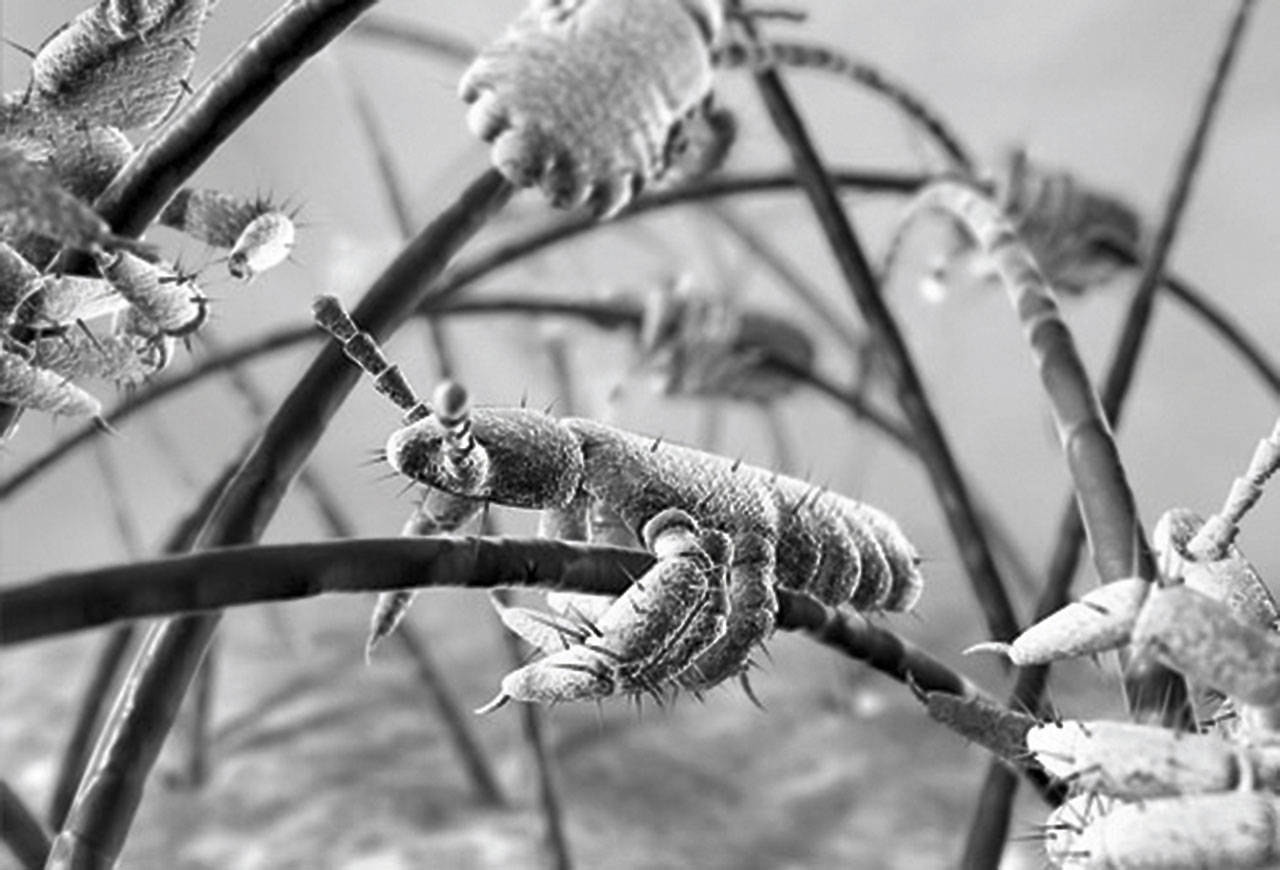They are tiny, make your scalp itch and can infect anyone.
Head lice is a problem for young kids and their families in many communities.
“It’s very common on Orcas. If it hits once in the school, 20 percent of the class will get it,” said Garcia, a nurse at the Orcas Medical Center. “It’s very quick and spreads easily. We see it three to four times a year.”
Garcia says it’s more important to catch it early and treat it immediately so it doesn’t spread.
“The lice jump from heads and land on pillows, couches, chairs – anything with fabric. Then they transfer to the person. It can be transferred from hugging or sharing hats or combs, towels or pillows,” said Garcia.
Head lice are small, wingless, parasitic white, brown or gray insects that live on the scalp and back of the neck and feed on human blood. Each louse is roughly the size of a sesame seed. The eggs, which are referred to as “nits,” stick to hair shafts close to the scalp. They are white specks that are glued to the shaft and will not slide off.
Lice are often seen in daycare, preschools and elementary schools because kids have more hair-to-hair contact through playing and sharing items. Lice spread by crawling from the scalp and items like clothing, brushes or linens. Orcas Elementary School sees about eight to 10 cases per year. They notify parents by sending a letter home with students.
Lice can live underwater for six hours and for 48 hours on a non-living host. Head lice will make your scalp itch and the bugs are visible to the naked eye immediately upon being exposed. Treatment is two-fold: ridding your head of the lice and clearing out the home infestation.
Garcia says if you think you have lice but aren’t sure, put olive oil or mayonnaise in your hair and cover it for four hours. After washing it out, run a fine-tooth comb through your hair and look for lice or nits. If you see anything, the next step is over the counter lice shampoo. If you are still unsure if you have it, one of the medical centers can take a look.
“We always treat as a precaution if someone thinks they have it,” she said. “Ninety-percent of the time, we catch it really early and it doesn’t spread to more than one or two kids. We have fewer cases every year.”
All bedding and clothing worn in the last 48 hours must be washed. Turn the bedding inside out so you trap any lice before putting items in the wash. Use the hottest water and dryer heat available. If something cannot be washed, put it in an airtight plastic bag to suffocate the lice. Scrub down every surface, and furniture can be treated with lice-killing spray.
An Orcas resident who wished to remain anonymous noticed a few lice in her daughter’s hair last week and took action immediately. She set up a Facebook page to alert parents and friends and booked appointments at the Lice Clinic of America in Bellingham. Because it was caught so early, she was able to eradicate the lice immediately. Trish Patro opened the lice clinic two months ago and has treated a handful of islanders.
“Lice have become resistant to the over the counter stuff and at-home remedies like olive oil and tea tree oil,” said Patro. “We call them super lice. And missing just one nit can re-infect the entire family again. It is very hard to get rid of lice. At my clinic, we have an FDA-certified device that is control-heated air, and we do one section of hair at a time for 30 seconds. It dehydrates the nits and kills the lice. Then we go through and apply a mousse that releases the glue from the hair to the nit. We apply conditioner and go through section by section, strand by strand and get every bug and nit. The client leaves with an active rinse on their head and then washes it out at home.”
Patro has a mobile unit and is hoping to make a trip to the San Juan Islands soon. She can be reached at 1-360-303-5771 and lcabellingham@gmail.com. Patro is available to give free head checks at the public school twice a year.




